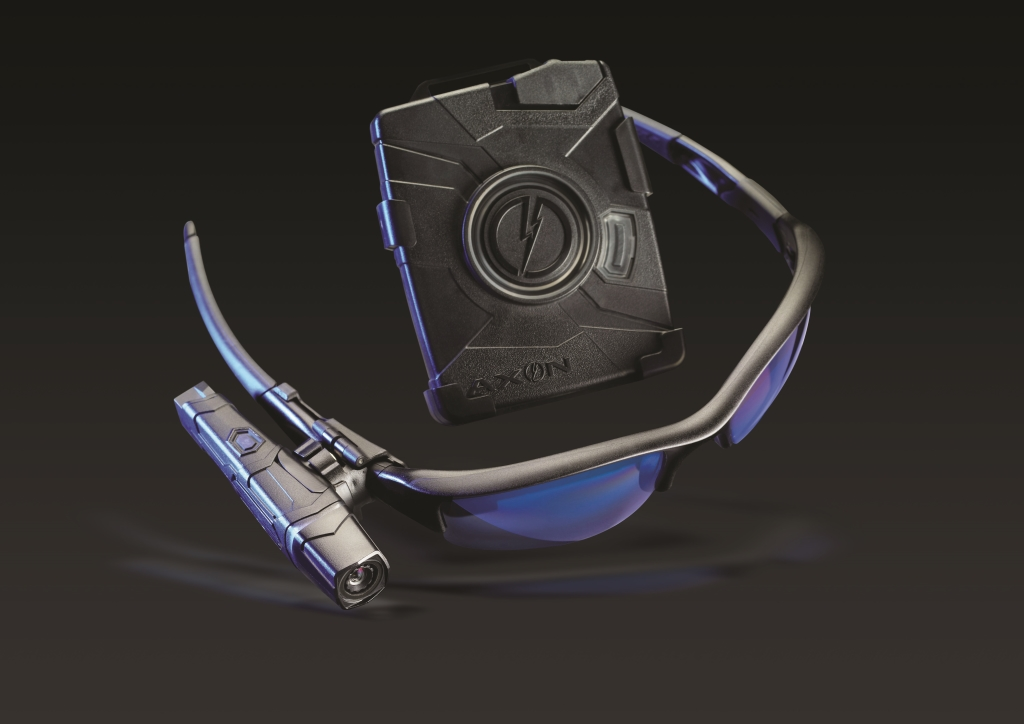Body Cameras Change Police Interactions
Study finds MPD use of force unchanged but fewer “subject stops” and citizen complaints.
A review of the body cameras worn by Milwaukee police shows the cameras may have changed some officer behavior, but the use of force remains the same.
Using a federal grant, the Urban Institute conducted the body camera evaluation for about a year from 2015 to 2016. With the cooperation of the Milwaukee Police Department, the nonprofit based in Washington, D.C. randomly studied 504 Milwaukee patrol officers who wear body cameras.
Overall, about 1,100 patrol officers in the city now wear the cameras.
Bryce Peterson, the study’s co-author, said one finding is that officers wearing cameras were less likely to be the target of a citizen complaint. He speculates there’s a “civilizing effect, which essentially means that if both the officers and community member who’s interacting with the officer, if they both know there’s a body camera recording their interactions, they’re going to be on their best behavior, essentially, right?” Peterson said.
Peterson also said officers wearing cameras were less likely to conduct so-called “subject stops,” which include stopping pedestrians or other people not in vehicles.
“If they’re already using restraint and following policy, simply giving them a camera — all that’s going to do is justify that use of force incident — it’s not necessarily going to change behaviors. That could be one explanation for what we’re seeing,” Peterson said.
Peterson presented the research Thursday evening to the Milwaukee Fire and Police Commission, where Milwaukee Police Department body camera administrator Doug Warrick praised the report.
“What this shows is our department, for the most part, is doing the right thing. Using the appropriate amount of force in most cases,” he said. “I think it leads to how well we’re being trained. I think it also says a lot for the supervision, as well.”
Steven DeVougas, chairman of the Milwaukee Fire and Police Commission, said he’s pleased with parts of the body camera report, but said he’d like to see the use of force go down. DeVougas said another study shows there’s a switch taking place.
“We just recently had our use of force report issued in 2017 and we saw there was an over-reliance on Tasers. People stopped using their firearms but they started using Tasers. So hopefully, we keep de-escalating force and only use force as a last resort,” DeVougas said.
Cynthia Greenwood of the Coalition for Justice told the commission that police use of force remains a problem at several departments in the metropolitan area.
Listen to the discussion here.
Study Of Milwaukee Police Wearing Body Cameras Finds Some Changes In Officer Actions was originally published by Wisconsin Public Radio.























Be careful with the statement that “officers wearing cameras were less likely to be the target of a citizen complaint”.
The actual report says “The DiD estimations confirm that wearing a BWC reduced an officer’s odds of receiving a complaint by more than 50 percent, though this difference only approached statistical significance” and “BWC’s appear to have reduced complaints against MPD officers” (note the word APPEAR and contrast that with the wording used when describing the subject stop data).
Note that there aren’t that many officers with 1 or more complaints over the time period so the sample size makes statistically significant findings a bit difficult for that variable.
Thus the real takeaways to consider are really the reduction in the number of subject stops and, if you please, the lack of any impact on use of force.
Cities like MILWAUKEE MUST use the camera footage to cut down on court costs, jury trials, and trial continuations. The Court systems costs are killing the taxpayer…court costs, overtime, etc.. The citizens demanded them in order to have accountability of Police Officers…but is MUST be a two way street. If it’s on video…why do we need to spend hundreds of thousands of dollars a year on trials. After all, if you are going to convict a Police officer in the media based on video footage, it MUST be the same for perpetrators.